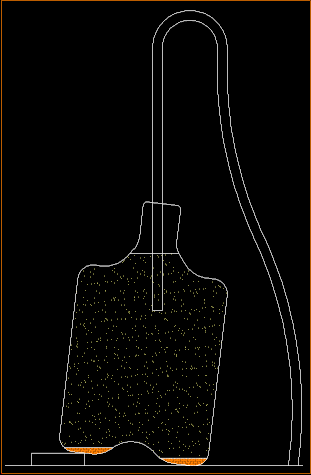In the beginning I was unsure. I did not know what I was doing. Maybe I still do not know what I am doing.
I am sure that I don’t know what I’m doing but the world can forgive me.
As is the case in the wine and beer making hobby. There are many ways to achieve wine and beer and as long as that is the result, the way it got there is less important.
When I started making wine I did not know anything. Even the simplest things I had to learn. I read books and followed their advice to the letter. For example racking: According to some sources you should rack wine every 2 months until it is clear enough to put it in a bottle. Other sources are easier and say for example every 4 months.
Well I changed my mind about that a long time ago. I rack as little as possible. In some cases only 2 times. I have several reasons:
- First of all, I don’t really like the job. Especially since….
- I don’t think it is necessary.
- Every time you rack you lose some wine
- Every time you rack you introduce oxygen in the wine which is not good in this stage
- Every time you rack you run the (small) risk of introducing bacteria. I never had a problem, but why risk it if you don’t need to?
So my schedule is roughly like this:
- In case of fresh fruit I take the fruit out of the most one week to ten days after the start of fermentation. I would not call this racking. You filter out the solid parts of fruit with cheese cloth and a funnel. Squeeze the cheese cloth to get as much juice as possible. This is usually a job which I do not like. It is sticky and a bit messy. Just to be sure I use a little sulphite. One gram per 10 liter.
- After the fermentation is more or less finished there is a layer of yeast on the bottom of the demijohn. The most does not have to be very clear. This can be after one month, or 6 weeks, or 2 months if that is more convenient. Then I rack for the first time. I take as much of the most as possible and I don’t care if a little lees are transferred to the clean bottle.
- Now I wait until the wine is as clear as it will be. This can take a long time. 6 Months? 1 Year? Maybe longer. A thin layer will form on the bottom of the demijohn. Now I rack for the second time. I add 0,5 gram sulphite per 10 liter. I try to get as much of the wine as possible without disturbing the layer on the bottom.
- The next day I will rack the wine in bottles.
Although it seems simple there are some tips that I would like to give:
- If you have never done it; Try with a demijohn of water so you know what to expect. You can dissolve dried bread crumbs in the water the day before to mimic the lees on the bottom.
- Place your demijohn with wine tilted to one side at least 2 weeks before racking. Try not to disturb the lees.
- I do not use the cap on the siphon which you are supposed to place in the layer of yeast. You can get more wine without it.
- Make sure that you can see the level of the wine in the demijohn. For this purpose I cut big holes in the plastic cover.
- Pay attention! You have to rack everything in one go. Start a few cm underneath the surface and follow the surface with the hose down to the deepest point in the demijohn. Do not let the hose come above the surface because it is not easy to restart without disturbing the lees.
- Do not be afraid to suck up some of the lees in the first racking. If you are too careful you will throw away too much wine.
In beer making especially it makes sense (to me) to rack as much as possible. Too bad if a little yeast is also racked. Who cares? There will be sediment in the finished bottle anyway! - Starting can be difficult with a manual racking hose. When you suck too much wine in the hose it will end up in your mouth (which is not a real bad thing) and if you suck too little wine in the hose it will flow back in the demijohn, possibly disturbing the lees.
- Starting with an automated siphon can be troublesome as well. If you pump too violently you can also disturb the lees. Especially if you have a small demijohn.
Racking is not too difficult but it is also very easy to make a small mistake and if you do make a mistake you probably have to rack an extra time.
(All the mistakes have been described out of personal experience.)
Cheers
Hans



